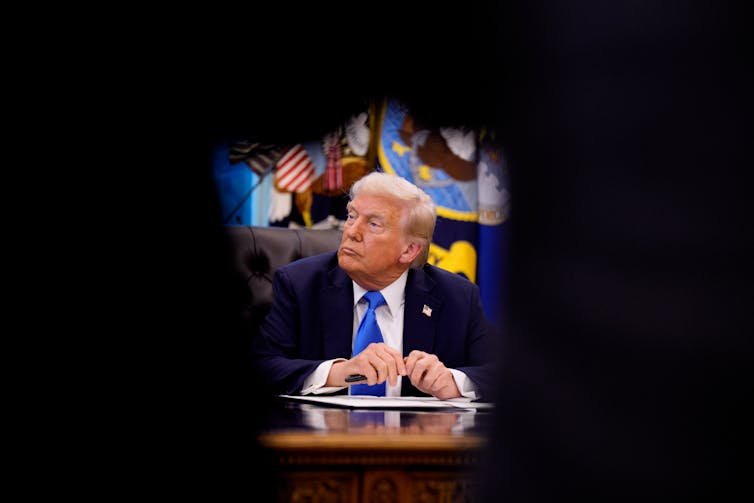Anderson edited "Leveraging: A Political, Economic and Societal Framework" (Springer, 2014), has taught at five universities and ran for the Democratic nomination for a Maryland congressional seat in 2016.
Moderate centrists occupy a place on the political spectrum that sits between progressivism and conservatism, roughly between the two 30 yard lines of a football field. Those 40 yards are neither purely Democratic nor purely Republican yards. They are largely centrist yards. Indeed, according to Gallup, 40 percent of American voters identify as independents; and although not all independents are centrists, most of them are.
Bold centrists can also be placed in the forty yards which sit between the pure Democrats and pure Republicans. They either want some unique synthesis of the left and right or some standpoint that transcends the left and the right. Georg Wilhem Friedrich Hegel was famous for generating a synthesis out of a thesis and an antithesis. Some Third Way Thinkers like the UK's Anthony Giddens have tried to transcend left and right to create a new democratic point of view.
A moderate centrist would propose a compromise on paid parental leave and child-care: six weeks of paid leave rather than 12 weeks and a child tax credit (which can be used for child-care) of $2,800 (up from $2,000) for children under five rather than $3,600, as well as $2,500 (up from) $2,000 rather than $3,000 for children between six and 17. The higher numbers were instituted as part of the American Rescue Plan Act which has expired. A bold centrist, like myself, would call for 24 weeks of paid leave and a choice of either $15,000 for child-care or a $15,000 tax credit for a stay-at-home parent. The moderate centrist finds a monetary middle ground; the bold centrist, in contrast, addresses a major cultural divide and tries to accommodate both sides with a unique policy solution.
In truth, it is not helpful to think of bold centrists as sitting between progressives and conservatives on some political spectrum. For bold centrists take the same approach to politics as the leading 20th century philosopher Ludwig Wittgenstein took to philosophy. Wittgenstein held that philosophy was not a doctrine but an activity.
To say that bold centrism is not a doctrine is to say that it is not primarily a belief system made up of a set of positions on a set of public policies, including immigration, transportation, health care, climate change, guns, taxes, foreign policy and family policy. Bold centrists must, in the end, take a stance on all of the policy issues. Yet being a bold centrist means you place more emphasis on the activity taken to arrive at the policies than the policies themselves. Being a bold centrist requires imagination, interaction with rival camps, an interest in finding a creative synthesis, and the patience it takes to reach this place.
The current discussion about centrism in Washington is focused on the efforts of No Labels, the source of the influential Problem-Solvers Caucus on Capitol Hill, to elect a moderate centrist ticket for president in 2024 "if the environmental conditions are right." The fear expressed by well-known Democrats ranging from Bill Galston of the Brookings Institution to former House Majority Leader Richard Gephardt is that a No Labels centrist ticket -- perhaps with West Virginia Democratic Senator Joseph Manchin and former Utah Republican Governor Jon Huntsman running for president and vice-president -- would lead to a Trump presidency.
We will not find out until April 2024 if No Labels runs (though they will not fund) the moderate centrist ticket. And they have every right to run a moderate centrist ticket. Yet, what this race needs is for a candidate or organization to step forward with a bold as opposed to moderate centrist agenda. Perhaps the Forward Party headed up by former Democratic presidential candidate Andrew Yang, former Republican Congressman David Jolly, and former Republican New Jersey Governor Christine Todd Whitman will produce a bold centrist agenda and generate the kind of activity needed to produce viable public policies. To date, the Forward Party seems more on the moderate centrist side than the bold centrist side, but it is too soon to tell.
It is conceivable that President Biden will change course and become a bold centrist himself. Indeed, this may be precisely the kind of development his campaign is going to need for him to be re-elected. But one way or another, campaign 2024 needs exploration of both moderate centrism and bold centrism because our country needs a very serious look at the overall concept of centrism. Thus, it may be best for our democracy if the race for president has two centrist tickets, not one.





















